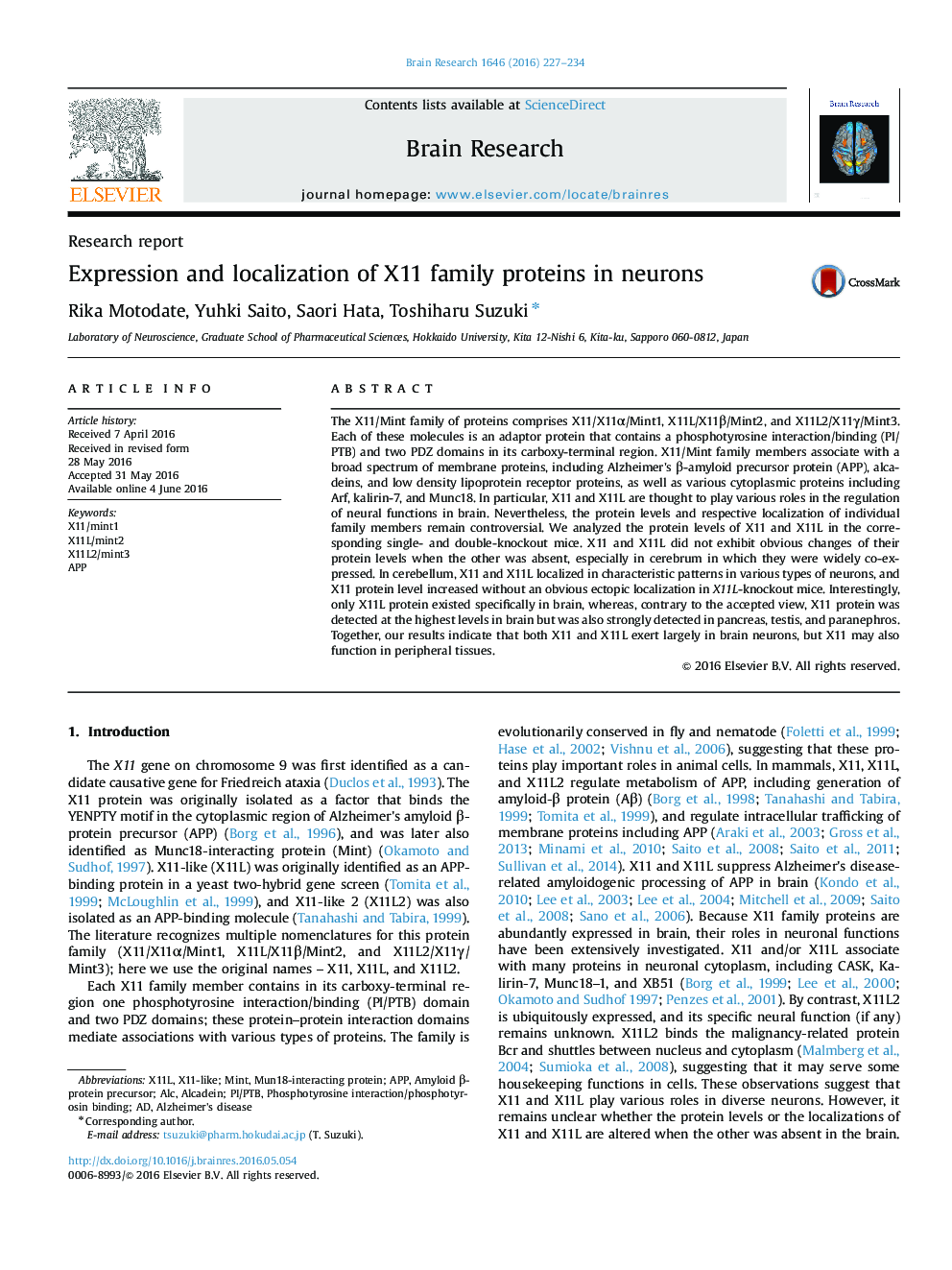| Article ID | Journal | Published Year | Pages | File Type |
|---|---|---|---|---|
| 6262371 | Brain Research | 2016 | 8 Pages |
â¢Among the X11 protein family, only X11L protein is detected in a neuron-specific manner.â¢X11s don't change their protein levels in cerebrum when one member is deleted.â¢X11 and X11L don't exhibit their ectopic localization in respective KO-mice brain.
The X11/Mint family of proteins comprises X11/X11α/Mint1, X11L/X11β/Mint2, and X11L2/X11γ/Mint3. Each of these molecules is an adaptor protein that contains a phosphotyrosine interaction/binding (PI/PTB) and two PDZ domains in its carboxy-terminal region. X11/Mint family members associate with a broad spectrum of membrane proteins, including Alzheimer's β-amyloid precursor protein (APP), alcadeins, and low density lipoprotein receptor proteins, as well as various cytoplasmic proteins including Arf, kalirin-7, and Munc18. In particular, X11 and X11L are thought to play various roles in the regulation of neural functions in brain. Nevertheless, the protein levels and respective localization of individual family members remain controversial. We analyzed the protein levels of X11 and X11L in the corresponding single- and double-knockout mice. X11 and X11L did not exhibit obvious changes of their protein levels when the other was absent, especially in cerebrum in which they were widely co-expressed. In cerebellum, X11 and X11L localized in characteristic patterns in various types of neurons, and X11 protein level increased without an obvious ectopic localization in X11L-knockout mice. Interestingly, only X11L protein existed specifically in brain, whereas, contrary to the accepted view, X11 protein was detected at the highest levels in brain but was also strongly detected in pancreas, testis, and paranephros. Together, our results indicate that both X11 and X11L exert largely in brain neurons, but X11 may also function in peripheral tissues.
